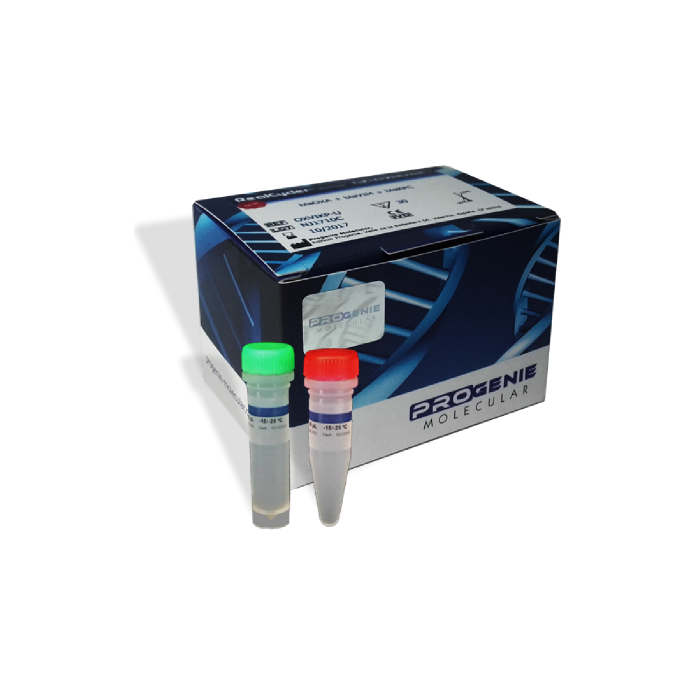Pneumocystis jirovecii PCR Kit CE/IVD
1. Intended use:
RealCycler PJIR is an in vitro diagnostic kit of reagents which allows real-time PCR qualitative detection of DNA from Pneumocystis jirovecii in clinical samples.
The system includes an internal control CHIC (Competitive Heterologous Internal Control) to prevent false negatives due to reaction inhibition.
2. Principle of the test
The polymerase chain reaction (PCR) is based on the amplification of a specific region of the DNA/RNA by using complementary primers to the target sequence. Real-time PCR uses marked probes with fluorophores that emit fluorescence in the case of amplification. The cycle of the PCR protocol in which appears significant fluorescence is proportional to the DNA/RNA quantity present in the sample. This value is called Cycle Threshold (Ct) or Cycle Quantification (Cq).
The amplification of Pneumocystis jirovecii is detected in the corresponding channel of FAM fluorophore and CHIC is detected in the corresponding channel of Alx532 or HEX fluorophore.
3. Technical specifications
Sensitivity: Pneumocystis jirovecii: 5 copies/μL.
The analytical sensitivity has been determined by limit dilution. This sensitivity has been showed in repeated assays with reproducibility over 95%.
Specificity: Pneumocystis jirovecii: large subunit mitochondrial ribosomal RNA gene.
Specificity validation has been performed according to experimental assays and BLAST analysis (www.ncbi.nlm.nih.gov/blast).
4. Contents
RealCycler PJIR-U includes the AmpliMix and a P. jirovecii DNA Positive Control.
All reagents are ready to use without adding or rebuilding any component.
Sample material: Purified DNA from clinical samples.
References:
Comparison of a commercial real-time PCR assay, RealCycler® PJIR kit, progenie molecular, to an in-house real-time PCR assay for the diagnosis of Pneumocystis jirovecii infections. Thibaud Guillaud-Saumur a,b,1, Gilles Nevez a,b, Amélie Bazire c, Michèle Virmaux b, Nicolas Papon d, Solène Le Gal a,b,⁎. Diagnostic Microbiology and Infectious Disease 87 (2017) 335–337.
| Is Featured? | No |
|---|

